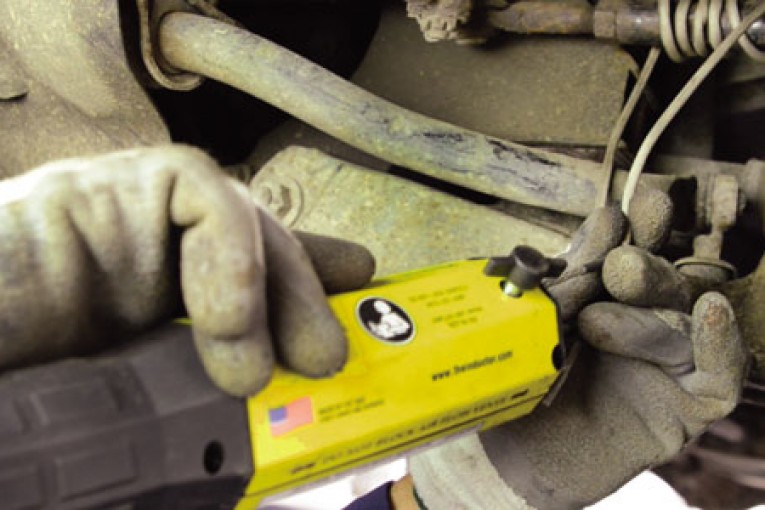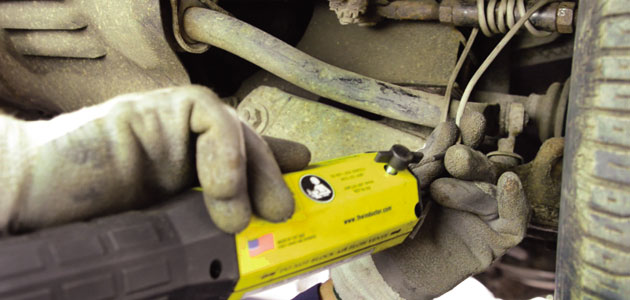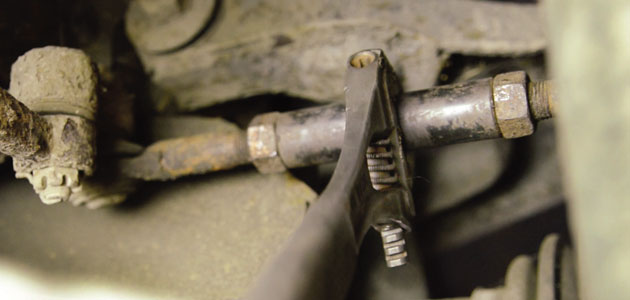
Removing rusted, corroded, or locked steering bolts is often a lengthy, difficult and frustrating task, especially if you’re using a ratchet wrench. It usually requires the application of penetrating fluid, or blasting the area with a torch. This can be very time-consuming, cause unwanted damage and potentially risk your safety.
Help is at hand, however, as the Mini-Ductor® II + (MD800P) handheld induction heating tool heats metal parts in seconds, allowing all types of adhesives bonded to metal, fasteners bonded with thread lock compound, and seized hardware to be removed and released much quicker and safer than by traditional naked flame heating.
Mechanics no longer need to run the risk of using a torch, which could damage the CV joint, rubber grommets, or the rotor.
Flexible friend
The Mini-Ductor® II + coils come in different diameters to suit different nut sizes and the Bearing Buddy flexible, heat resistant coil is ideal for this application.
STEP-BY-STEP
1 Clean the area with a wire brush and remove dirt/grease

2 Wrap the tool with the Bearing Buddy coil

3 Attach the Mini-Ductor® II +

4 Heat the Bearing Buddy coil and remove once heated

5 Select the correct tool for loosening the bolt

6 The bolt should loosen easily, allowing simple removal










